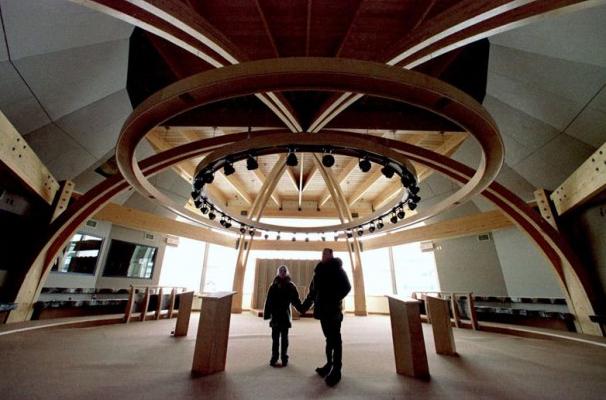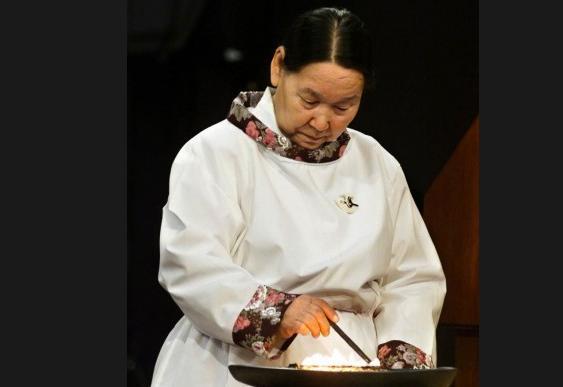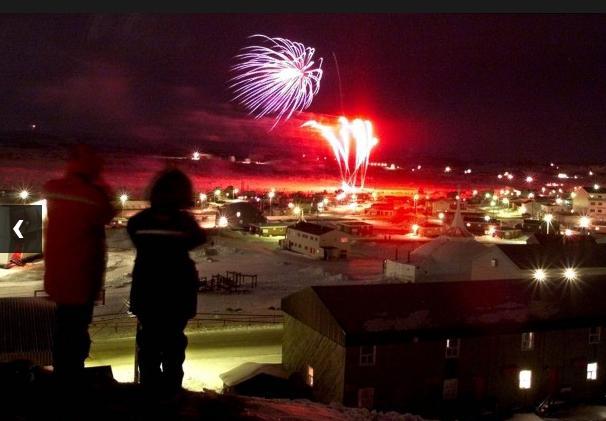Land claim anniversary in Nunavut, Canada

Communities across Canada’s eastern Arctic territory of Nunavut are celebrating Nunavut Day today, and this year marks the 20th anniversary of the passing of the Nunavut Land Claims Agreement Act and the Nunavut Act.
Activities will include community meals, speeches by Inuit leaders and traditional games and dances.
“It’s a day we can remember those who survived before us, and a day to celebrate those hardships Inuit have overcome over the years. It’s a chance for us to look forward and appreciate what we have today and share it together as a community throughout the territory,” said PJ Akeagok, who works with Nunavut Tunngavik Inc., the Inuit land claims association in the territory.
Cathy Towtongie, president of NTI, said over the past 20 years, Inuit have changed the map of Canada.
“Other indigenous groups around the world are envious we did it without warfare. And that’s a huge accomplishment for Inuit, and for the rest of Canada, for Canadians,” she said.
Nunavut Premier Eva Aariak said they have overcome several hurdles, and are close to conquering another.
“We have not accomplished the third phase, which is devolution. And we have full support from NTI on that and I’m looking forward to advancing, at least to start, the negotiations,” said Aariak.
Nunavut Day is a public holiday — government offices, along with many organizations and businesses will be closed for the day.
NTI and the territorial government have planned many activities. In Iqaluit, the big event will be the unveiling of monuments commissioned to mark the anniversary. There will also be food, games and music all afternoon.

Inuit artists create monument for anniversary
To mark the anniversary, NTI commissioned a major monument from three master carvers from the territory’s three regions.
“Knowing that it will be around a lot longer than I will be makes it more special,” said Lootie Pijami.
Pijami, originally from Grise Fiord, spent the last three years helping to create and carve the larger-than-life monument. Pijami said it went from an idea to a five-metre-high creation.
The monument is made up of 10 large pieces, but it was carved as one piece. Different designs of animals and birds are connected by what appears to be waves, all coming from a woman singing a traditional song.
“We have a lady singing there and what we wanted to use was the sound to tie all the pieces together,” said Gjoa Haven artist Inuk Charlie.
The third artist from Repulse Bay, Paul Maliki, said there were challenging times, but all three artists said they worked well together and could not have asked for a better team.

Youth empowered
Most young people in the territory have heard of the land claims agreement, but many who were approached by CBC News didn’t know much about it.
“I don’t fully understand how it is,” said Mosesie Petooloosie.
Agaaqtoq Eetak, 23, has been carving for several years to make his living. He said he needs to learn more about the land claim, but said it’s important, especially since it created a new territory.
He said Inuit culture wouldn’t have the same protection if Inuit did not have their own region.
“If we didn’t start, you know, making our own policies and restrictions and what not, I think it would’ve really taken a toll on our people. Eventually we would’ve been brainwashed, I guess,” he said.
Nunavut Sivuniksavut, a post-secondary school based in Ottawa, teaches the land claims agreement to its Inuit students
“The youth today are the leaders of the future and knowing that we have a territory of our own, Inuit have a territory of their own, is a very good thing because it makes us feel proud and makes us want to work towards a better future for Inuit,” said student Christine Tootoo.



